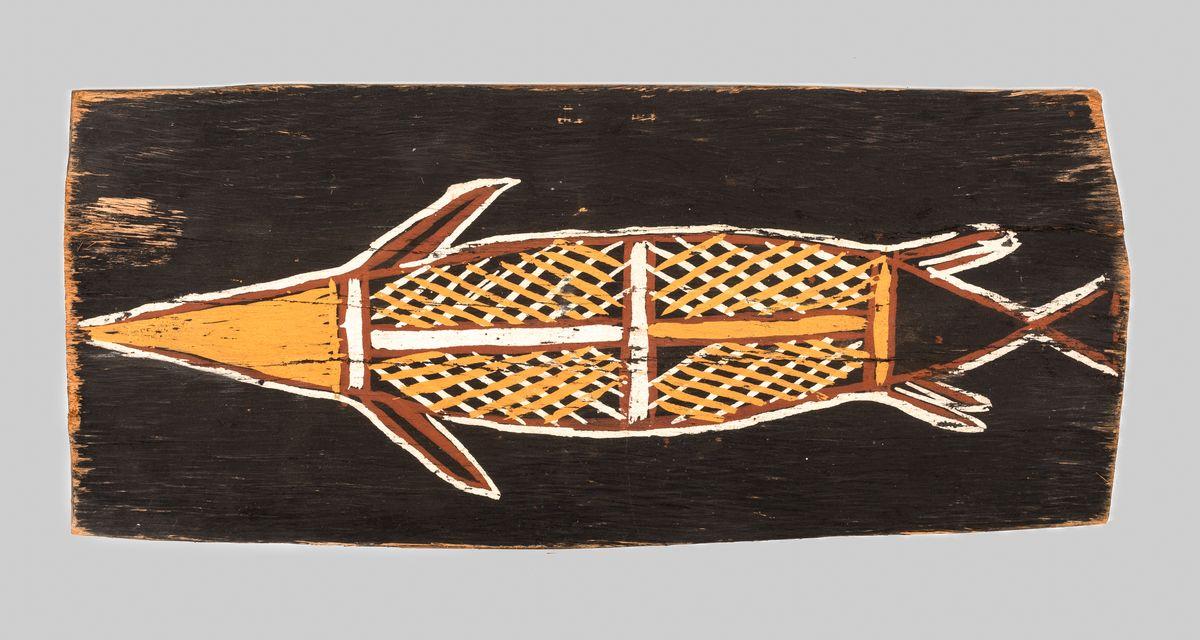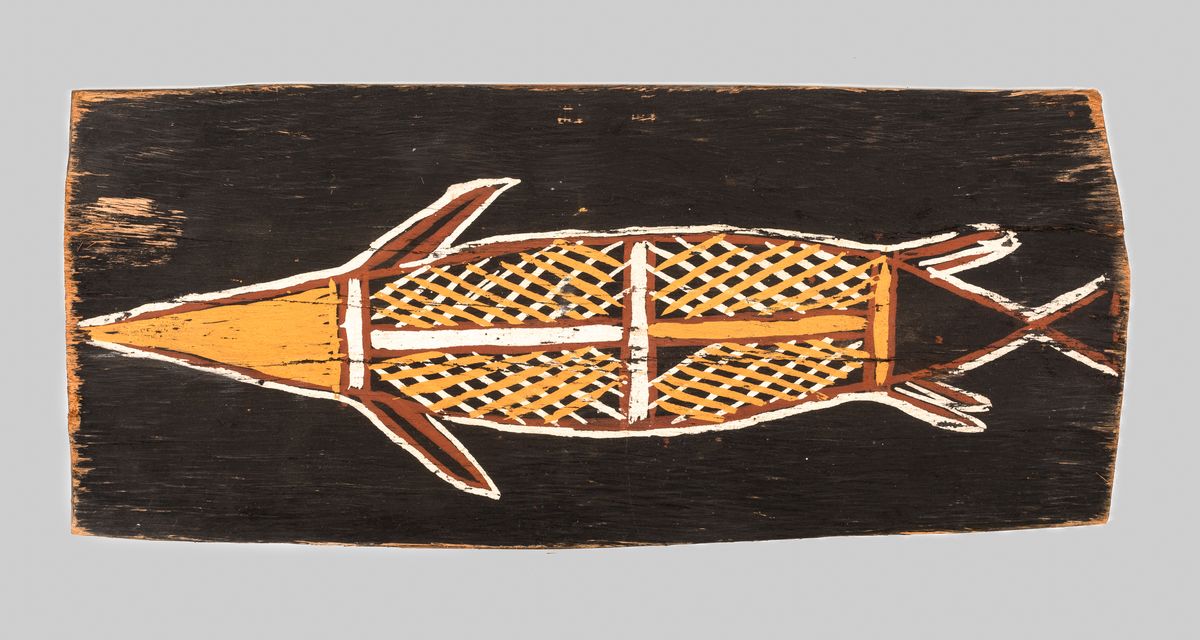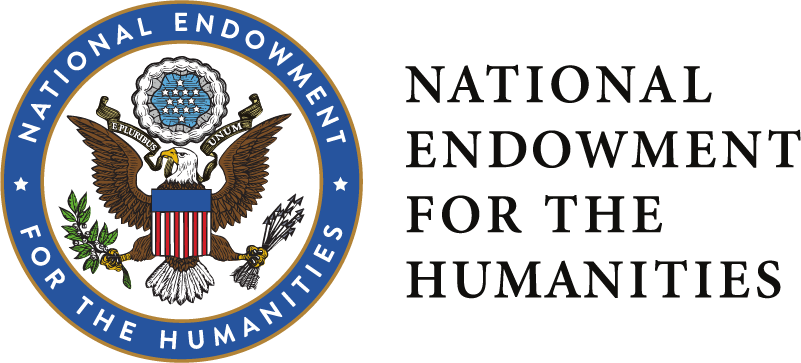
Fish
Artist:
Unknown
Place made:Groote Eylandt, Northern Territory, Australia
General region:Oceania
Culture: Aboriginal Australians
Date: mid- 20th century
Medium: Natural pigments on bark
Dimensions:
h. 7 1/4 in. (18.4 cm); w. 16 1/4 in. (41.3 cm)
Credit Line: San Antonio Museum of Art, gift of Mr. Allan Gerdau
Object number: 62.208.5
Label Text
Australia’s Indigenous peoples once spoke over 250 languages and 500 dialects. Artistic traditions between language groups and geographical regions are equally diverse despite colonialism and assimilation programs that decimated Indigenous communities from 1788 to the 1960s.
Bark paintings are characteristic of Arnhem Land and its adjacent regions around the continent’s northern Top End and the Gulf of Carpentaria. Stringybark is peeled in a sheet from the eucalyptus tree, flattened over fire, and sanded before natural ochre pigments are applied. Often, artists employ a delicate crosshatching technique (rarrk) to create a shimmering optical effect that imbues the work with ancestral power. To achieve various brushstrokes, different tools are used including brushes made from human hair, twigs or sticks, feathers, leaves, and frayed bark fibers.
While bark paintings became distinct artworks in the twentieth century, earlier examples adorned the interior of bark shelters. The subjects and imagery have ancient roots signaling Aboriginal peoples’ deep connections to their ancestors, the land, and all living things. Many motifs are related to ceremonies, such as body painting designs, or reference ancestral stories passed down over generations—evident in rock art that is over 40,000 years old. Aboriginal artists in Australia continue to create bark paintings today as part of the world’s oldest continuous cultural tradition.
(Group label, Lana Meador, 2022)
Bark paintings are characteristic of Arnhem Land and its adjacent regions around the continent’s northern Top End and the Gulf of Carpentaria. Stringybark is peeled in a sheet from the eucalyptus tree, flattened over fire, and sanded before natural ochre pigments are applied. Often, artists employ a delicate crosshatching technique (rarrk) to create a shimmering optical effect that imbues the work with ancestral power. To achieve various brushstrokes, different tools are used including brushes made from human hair, twigs or sticks, feathers, leaves, and frayed bark fibers.
While bark paintings became distinct artworks in the twentieth century, earlier examples adorned the interior of bark shelters. The subjects and imagery have ancient roots signaling Aboriginal peoples’ deep connections to their ancestors, the land, and all living things. Many motifs are related to ceremonies, such as body painting designs, or reference ancestral stories passed down over generations—evident in rock art that is over 40,000 years old. Aboriginal artists in Australia continue to create bark paintings today as part of the world’s oldest continuous cultural tradition.
(Group label, Lana Meador, 2022)
On view
In Collection(s)
The San Antonio Museum of Art is in the process of digitizing its permanent collection. This electronic record was created from historic documentation that does not necessarily reflect SAMA's complete or current knowledge about the object. Review and updating of such records is ongoing.

 This resource has been made possible in part by the National Endowment for the Humanities: Exploring the Human Endeavor.
This resource has been made possible in part by the National Endowment for the Humanities: Exploring the Human Endeavor.
